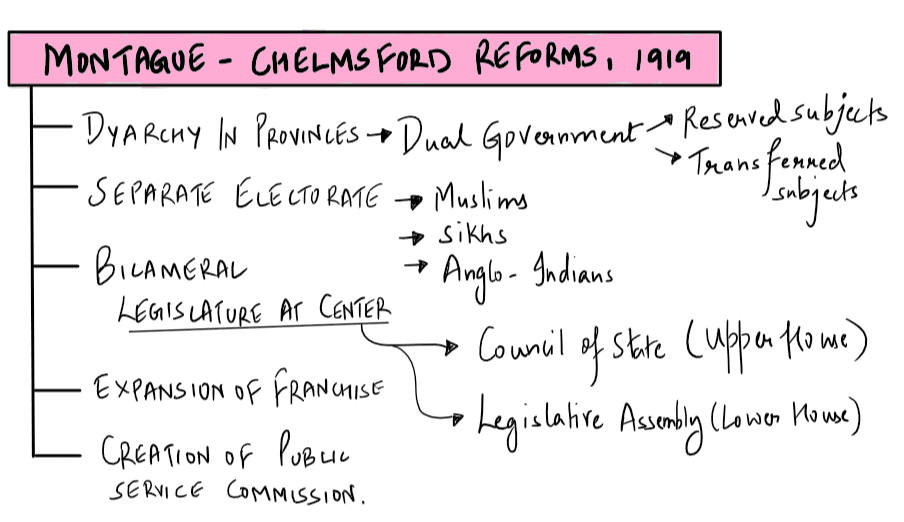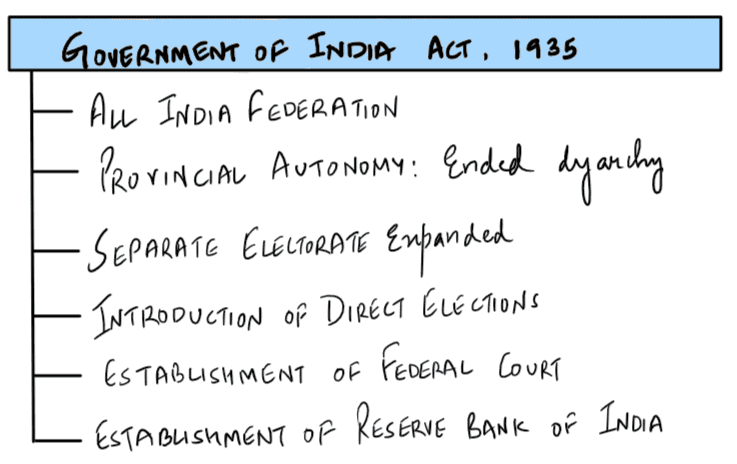Statement 1 is incorrect. The Montagu-Chelmsford Reforms of 1919 did not recommend granting voting rights to all women above the age of 21. While the reforms introduced some limited electoral reforms, including the extension of the franchise to a larger section of the Indian population, they did not grant universal suffrage to women.
Statement 2 is correct. The Government of India Act of 1935 introduced reserved seats for women in the legislatures at both the central and provincial levels. These reserved seats were aimed at ensuring representation for women in the political process.
Government of India, Act 1919
- Introduced limited self-government and increased Indian participation
- Introduced Dyarchy (Dual Government) in provinces:
- Transferred subjects → Administered by Indian ministers
- Reserved subjects → Administered by British officials
- Bicameral Legislature at the Central Level
- Separate Electorates Continued
- High Commissioner for India in London was created to represent Indian affairs in Britain.
- Subjects divided into Central and Provincial lists
- Voting rights were restricted based on property, income, and education.
Government of India, Act 1919
Government of India, Act 1935
- Created an All-India Federation consisting of British Indian Provinces and Princely States. (Never Implemented)
- Bicameralism extended to six provinces (Bengal, Bombay, Madras, Bihar, Assam, and United Provinces)
- Abolished Dyarchy at the provincial level, Introduced Provincial Autonomy → Governors had to act on ministers' advice (except in special cases)
- Three lists introduced:
- Federal List (Centre)
- Provincial List (Provinces)
- Concurrent List (Both Centre & Provinces)
- Ministers had full control over provincial subjects (except during emergencies)
- Established the Federal Court of India (precursor to the Supreme Court)
- Communal and separate electorates were retained and extended to groups such as Anglo-Indians and Indo-Christians.
- Women were given reservations in Provincial and central legislature.
Government of India, Act 1935



